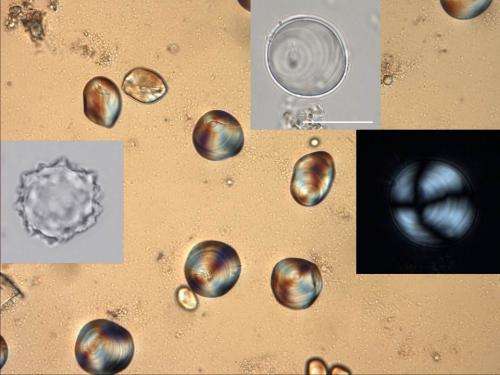In ancient China, sago palms were major plant food prior to rice cultivation

Before rice cultivation became prevalent, ancient populations on the southern coast of China likely relied on sago palms as staple plant foods, according to research published May 8 in the open access journal PLOS ONE by Xiaoyan Yang and colleagues from the Chinese Academy of Sciences in Beijing, China.
Little is known about prehistoric diets of those who lived in southern subtropical China, as the acidic soils and humid climate of the region cause poor preservation of plant remains. Though literature and archaeological discoveries have suggested that roots and tubers were the staple foods in this region, no direct evidence has so far been found.
In this study, researchers analyzed starch granules recovered from Neolithic stone tools used approximately 3,350-2,470 BC, and found these to resemble starches typically found in sago-type palms. They found that people at this time also likely relied on bananas, acorns and freshwater roots and tubers as important plant foods prior to the cultivation of rice.
More information: Yang X, Barton HJ, Wan Z, Li Q, Ma Z, et al. (2013) Sago-type Palms Were an Important Plant Food Prior to Rice in Southern Subtropical China. PLoS ONE 8(5): e63148. doi:10.1371/journal.pone.0063148
Journal information: PLoS ONE
Provided by Public Library of Science




















